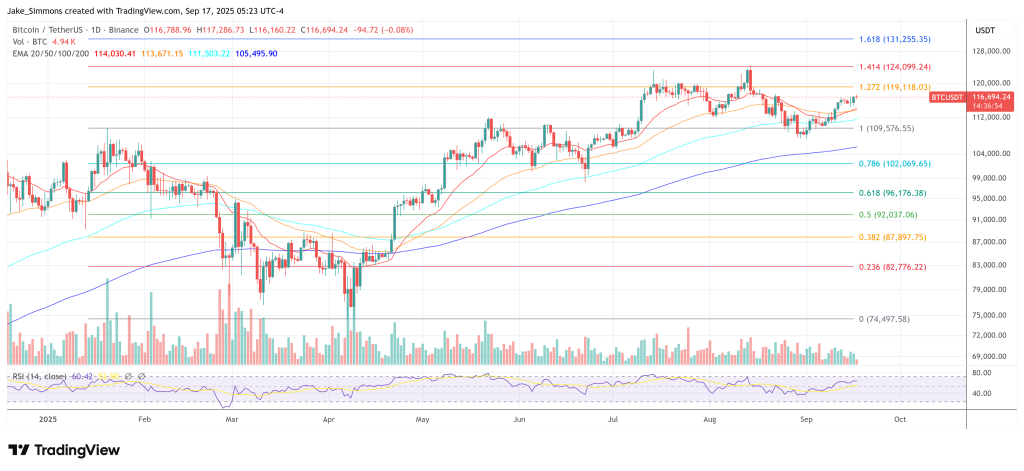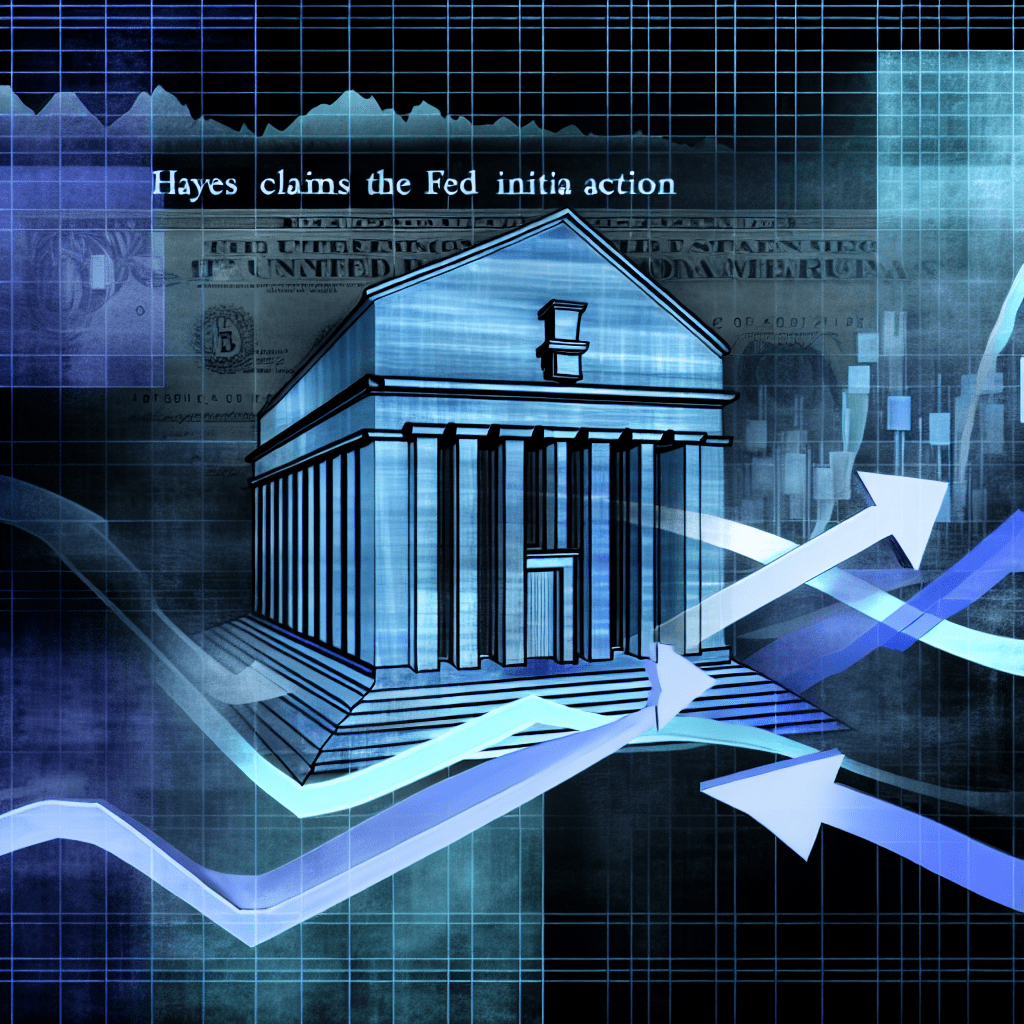Arthur Hayes contends that the pivotal moment sending Bitcoin towards $1 million has just occurred. In a post on X late Monday, the co-founder of BitMEX indicated that the US Federal Reserve is gearing up markets for “yield curve control” (YCC) under what he refers to as a “third mandate.” This aligns with the confirmation of economist Stephen Miran to the Fed’s Board of Governors and a new Bloomberg report echoing this sentiment.
“With Miran now confirmed on the Fed board, the mainstream media is prepping the world for the Fed’s ‘third mandate,’ which fundamentally revolves around yield curve control. LFG! YCC -> $BTC = $1m,” Hayes stated. His remark followed shortly after Bloomberg released “Fed ‘Third Mandate’ Forces Bond Traders to Rethink Age-Old Rules,” which discusses the likelihood that the Fed will take a more active role in managing long-term rates as part of its statutory responsibilities.
Miran’s presence on the Board is now a reality. He was narrowly confirmed by the US Senate and sworn in prior to this week’s policy meeting, amidst a broader political struggle regarding the independence of the central bank.
Related Reading
The essence of Hayes’s argument is that the Fed’s commonly referred to “dual mandate” actually encompasses three key areas, and that emphasizing “moderate long-term interest rates” could lead officials towards exerting direct control over the yield curve. This terminology is statutory, not just speculative. According to 12 U.S.C. § 225a, Congress mandates the Fed to promote “maximum employment, stable prices, and moderate long-term interest rates,” a directive that also appears on the Fed’s official website.
What Yield Curve Control Means For Bitcoin
On X, several market participants quickly supported this perspective. Bitwise CIO Matt Hougan succinctly responded, “Agree.” Macro investor Lawrence Lepard remarked, “Wow! Miran saying the quiet part out loud!” Others noted they’ve been highlighting the “third mandate” for some time.
Mel Mattison pointed out the statute in June, arguing that maintaining moderate long-term rates is “just as integral to their mandate as achieving price stability and low unemployment.” He posited that during conflicting goals—such as in the Covid crisis—policymakers might “sacrifice one to achieve two,” meaning they could utilize balance-sheet strategies to stabilize long-term rates and employment, even if it could lead to higher inflation. His insight emphasizes the crucial operational element in Hayes’s theory.
The practical implications of YCC are debated, yet conceptually straightforward. Unlike conventional QE, which sets a purchase limit and allows yields to fluctuate, YCC aims at specific yields for medium- or long-term Treasuries, implementing caps through unlimited purchasing if necessary. The St. Louis Fed defines YCC as “imposing interest rate caps on certain maturities,” a strategy observed in Japan since 2016 and briefly in Australia. Such a system seeks to control tumultuous increases in long-term rates that complicate debt servicing and risk mitigation; critics argue it represents a softer form of financial repression, with potential inflationary risks.
Related Reading
Hayes has linked this macro lever to a dramatic upside for Bitcoin for years. In 2022, he declared that “YCC = $1mm BTC,” a sentiment he reiterated in 2023 and again today. His reasoning is straightforward: if the Fed restricts long-term yields while fiscal deficits remain substantial, real yields are depressed and fiat currency devaluation accelerates, steering investments towards hard-cap assets like Bitcoin. Whether this causal relationship materializes remains uncertain, but the assertion is consistent with his earlier writings and public statements.
Bloomberg’s article did not claim that YCC policy is imminent; rather it examined how traders are recalibrating duration risk in light of Miran’s comments about “moderate long-term interest rates” and the political dynamics surrounding the Fed.
Nonetheless, the statutory foundation adds a layer of significance to the “third mandate” narrative beyond mere rhetoric. As the Fed gathers for its September meeting—widely expected to include a rate cut and with Board membership in flux—the discourse over whether the institution will ultimately pivot from guidance to control on long-term rates has transitioned from peripheral discussions to mainstream dialogue.
According to Hayes, merely acknowledging this potential path serves as the “trigger.” For the broader markets, the critical factor lies in whether managing the yield curve evolves into a policy choice or a policy necessity.
At press time, BTC was valued at $116,694.

Featured image created with DALL.E, chart from TradingView.com

